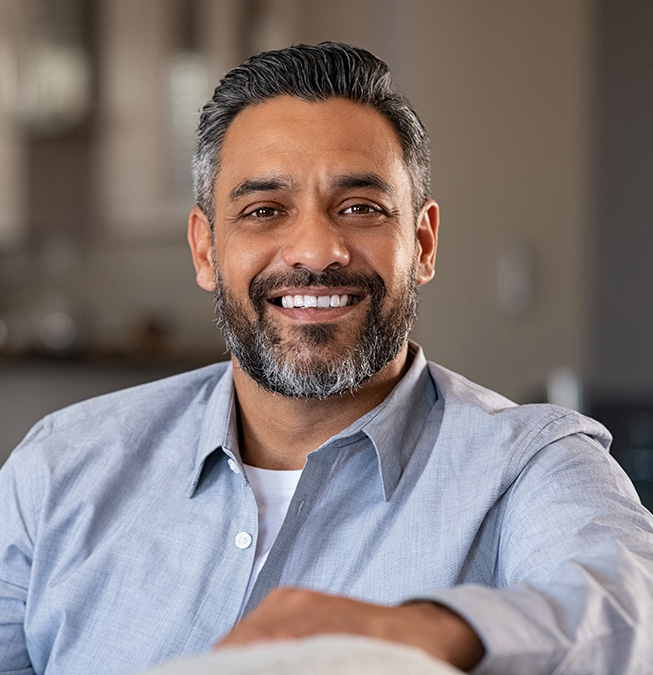- 20% OFF NEW PATIENT APPOINTMENT
- NOW ONLY £76 (USALLY £95)
- BOOK NOW
A London dentist reveals some things you might not know about Invisalign Clear Braces, including: the age range which favours the treatment, how you can track whether a teenager is sticking to the Invisalign schedule and why the treatment can help your dental hygiene and not just your appearance
You might think that you don’t know anyone who wears Invisalign braces. But because, they are clear, discreet and easily removable it might well be that you just haven’t noticed that a friend or relative is sporting them.
The results they get – when correcting crowded, overly-spaced or crooked teeth – are certainly noticeable.
Because these braces are so unobtrusive they perhaps don’t get the amount of attention they deserve. How can the treatment realign teeth in just a year when traditional braces take far longer to do this?
Too good to be true? Is this the case with Invisalign?
London dentist Ethicare, which is run by Glafcos and Klaudia Tombolis, has been offering the Invisalign treatment for some time.
The Ethicare website has a comprehensive section about Invisalign; below are a few more questions and answers about the braces which have been used by almost 2 million people worldwide.
How many people are suitable candidates for Invisalign treatment?
Glafcos says that an average of “about four or five people” per week come into the practice for the consultation which determines whether they are suitable candidate for Invisalign treatment – the vast majority are.
Occasionally, people with “complex” dental issues – for instance, they might need teeth removing – might find that this procedure is not appropriate for them. These people can be referred to an Ethicare orthodontist who can recommend alternative treatments.
Does the popularity of clear braces spell the end for more traditional metal braces?
Glafcos revealed that a lot less people are opting for metal braces now that clear braces are an option. He said: “Metal braces just aren’t as discreet as the clear braces used by Invisalign.” Ceramic braces can still be used by patients who don’t want to have metal in their mouth.
Who is the typical Invisalign customer?
At Ethicare, the typical Invisalign customer is a lady aged 25 to 50 but the clear braces have proved popular with men too. Glafcos says: “With the relatively new Invisalign Teen brace product we do get quite a few patients aged about 14 to 18 fitted with the clear braces.”
How do teens generally react to the idea of wearing braces? Do they prefer clear braces to more noticeable metal braces?
Glafcos acknowledges that teens, like all patients, should only wear braces that they are comfortable with.
It seems that tastes vary as Glafcos says: “We had a teenage patient recently who was really quite proud to have metal braces fitted.” (Perhaps this patient was happy to stand out in the crowd or maybe their peers all favoured metal braces!)
Other teenagers can be quite self-conscious about their appearance and so the idea of easily-removable clear braces which don’t cramp their lifestyle inevitably appeals.
According to YouTube Invisalign promotional footage, some American dentists quiz teenage patients to find out whether they are likely to lose books, contact lenses etc. as this will evaluate whether they are likely to lose the braces! Does Ethicare also take this line of questioning?
Glafcos says: “With the Invisalign Teen treatment, the aligners have ‘markers’ so that you can see whether a patient has been wearing them and how long they have been wearing them for.” (You have to wear each aligner for about a fortnight, before moving on to the next one).
With the adult Invisalign braces, no such markers exist – but people who don’t use them properly know that they won’t see the benefits.
Are Invisalign braces just a cosmetic product? Can they improve dental health as well?
The answer seems to be yes as studies have shown that having the braces can even improve your dental hygiene during treatment.
Many people wear the braces to realign teeth which are too crowded or too widely spaced.
Glafcos says: “Spacing is normally just a cosmetic issue but crowding among the teeth can cause cleaning and flossing difficulties so realigning teeth, in this instance, isn’t just a cosmetic issue.”
Have there been any new developments in the world of Invisalign recently?
Invisalign Anterior (which used to just treat the front teeth) has now been cancelled. However, Invisalign Lite treatment, which is for mild (rather than pronounced) misalignment, has been introduced.
Glafcos says: “Invisalign Lite can be a great option as it’s cheaper than the Invisalign Full treatment, which although it treats all of the teeth in the mouth, isn’t needed by every patient.”
The news that newer, cheaper Invisalign Braces are appearing on the market is good news for the many people who are considering getting this innovative new treatment.

Lorem ipsum dolor sit amet, consectetur adipiscing elit, sed do eiusmod tempor incididunt ut labore et dolore magna aliqua. Ut enim ad minim veniam, quis nostrud exercitation ullamco laboris nisi ut aliquip ex ea commodo consequat. Duis aute irure dolor in reprehenderit in voluptate velit esse cillum dolore eu fugiat nulla pariatur.








Sed ut perspiciatis unde omnis iste natus error sit voluptatem
accusantium dolor emquesit voluptatem laudantiu.
Sed ut perspiciatis unde omnis iste natus error sit voluptatem accusantium dolor emquesit voluptatem laudantiu.
I have been really happy with my experience at Ethicare Dental Practice. From the moment I walked in, everyone was kind, reassuring, and professional. They took the time to explain things properly and... Read More
Best orthodontist I've seen! Priti took the time to talk through everything with me, gave me a really honest opinion and helped me understand all of the history and future options with my teeth. She w... Read More
I’ve been a patient of Glafcos Tombolis for the past eight years, and I couldn’t be happier. When I first visited his practice, my teeth were in a bad state, and as a nervous patient, I found dent... Read More
Glafcos has been my dentist for many years and I wouldn't consider going anywhere else. He is extremely patient and thorough and makes time to explain all procedures fully and answer any questions. ... Read More
Just completed my Invisalign treatment with Priti, and I couldn’t be happier with the results! She’s incredibly thorough, professional, and has such a warm and lovely demeanor. Her attention to de... Read More